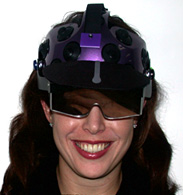Measuring TV Program Engagement
 One of the problems with measuring the viewership of television programming is that counting viewers doesn’t give advertisers or programmers any information about how engaged the viewers are with the content. Two Australian firms, PBL Media’s Nine Network and Neuro-Insight, have launched an effort dubbed PEP – program engagement power – to rectify that.
One of the problems with measuring the viewership of television programming is that counting viewers doesn’t give advertisers or programmers any information about how engaged the viewers are with the content. Two Australian firms, PBL Media’s Nine Network and Neuro-Insight, have launched an effort dubbed PEP – program engagement power – to rectify that.
Engagement means different things to different marketers, but Neuro-Insight defines the term as, “the sense of personal relevance and involvement that an individual feels in response to a portrayed situation. High engagement is associated with increased brain activity in a number of regions including the prefrontal and orbito-frontal cortex.”
Neuro-Insight uses EEG technology, which measures brain activity with a headset and allows relatively comfortable viewing of programs, marketing materials, etc. They note that “no gel, head-shaving or metal electrodes.” Lack of head-shaving no doubt expands the potential base of subjects. The headsets do use a few “small felt sensors, soaked in a saline solution,” though.
One of the results of the initial PEP work was the finding that a show with a modest audience share, Australia’s Funniest Home Videos, scored very well for viewer engagement. Another show, targeted at a female audience, was found to have higher engagement levels with male viewers. The full article by Neil Shoebridge of The Australian Financial Review is here (subscription required).
What does engagement mean for programmers and advertisers? Programmers might well take high engagement levels as encouragement that viewers are responding and may exhibit higher loyalty to the show. Will higher engagement with the content mean better results for advertisers? That’s hard to say, although Neuro-Insight no doubt has the answer: measure engagment levels with the commercials, too.
